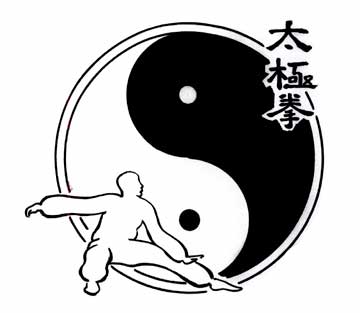Using the Chinese symbol for Yin and Yang is probably the
best known “ad” for tai chi. It’s a
symbol used to illustrate duality, the opposites. Typically it’s black and
white and each color has a small dot of the other in it to show that they have
a little of the other within them. There are arguments about which color should
be on which side and if they should be aligned vertically or horizontally. For
this article, it makes no difference; I just want to briefly touch on the
duality the symbol represents.
The symbol being a circle represents they are one unit with
two parts. We need to understand that the parts represent opposites and the grey
areas between them. The Yang side is the dark-colored side, the Yin is light. The
Yang side is regarded at male, the Yin side is female. For example, that the
male side has a dot of the opposing color could be said to mean a man may have
a feminine side. Vice-versa for a woman. For what we do in tai chi, we look at
this play between the Yin and Yang in a variety of ways.
Yang Cheng-Fu, whose tai chi lineage we come from, supposedly
said that tai chi has a “dark” (martial) side and a “light” (civil) side. The
majority of tai chi is taught on the civil side, being for health and fitness.
The martial applications are the Ch’uan
(fist) applications, the martial side. I
believe a student should have at least some instruction in the martial side to
enhance their understanding of the art and give more meaning to the movements
done for exercise.
The practicality of understanding the duality is shown in
knowing that we have an empty leg and a full leg (opposites) when we step. It
stands to reason that one cannot step, or pivot with the full leg without
jumping or twisting and possibly hurting the leg. Using knowledge of empty and
full allows us to determine which foot steps without having to have an
instructor there to tell us.
Yin and Yang movements get us to expand and contract, to
rise and drop, to advance and retreat. We work right and left for balance,
flexibility and coordination. We exercise the outside of the body but the
inside is being worked as well. And as the body is exercised, so is the mind.
That’s the striking part of tai chi, the meditation in motion. Ultimately, the
mind is still as the body is in motion.
There is much more to all this, volumes have been written on
the subject. I wanted to write this to give the reader something of a primer, a
look into the Oriental mind.
Until next time,
Lee
